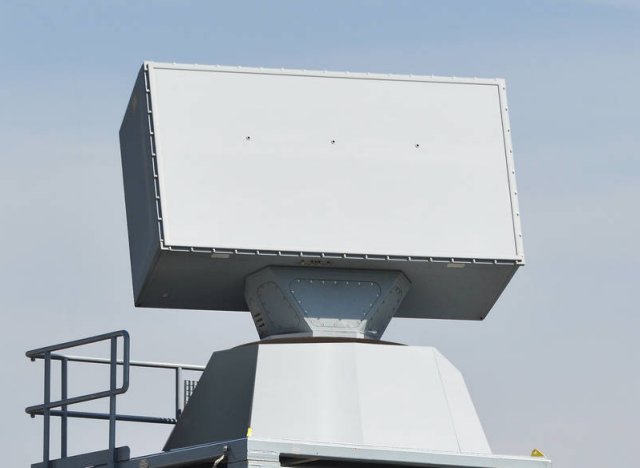Breaking news
SAS 2016: Airbus moving forward with TRS-4D integration on LCS Freedom variant.
 Airbus' TRS-4D AESA radar is to be fitted on eight Freedom-class LCS |
|||
The TRS-4D radar for LCS is a rotating version of the
Active Electronically Scanned Array (AESA) fixed panel TRS-4D radar
currently going aboard the German F-125 frigates. The TRS-4D will be
the first AESA rotating radar aboard a US Navy ship. The LCS rotating
variant features a single-face AESA antenna rotating at either 15 rpm
or 30 rpm (depending on the update rate required) at 2-70° in elevation.This
new radar combines mechanical and electronic azimuth scanning to achieve
fast generation of target tracks. The TRS-4D features multiple modes:
air search, surface search, gunfire control support, weapons fire control
support, and helicopter approach control.
Using Gallium Nitride Active Electronically Scanned Array (AESA) sensor technology with multiple digitally formed beams, the new generation TRS-4D opens a new dimension for maritime missions that face advance threats with its increased sensitivity and ability to rapidly generate tracks. The TRS-4D has a maximum instrumented range of 250 km and can, for example, detect a maritime patrol aircraft at distance up to 100 km. The single panel rotating version uses an innovative combination of electronic scanning technology and mechanical rotation, to paint contacts more often than radars that only rotate mechanically. This allows for unprecedented surveillance and unmatched threat detection and tracking performance to extend mission success and platform survivability. TRS-4D supports the countering of conventional and asymmetric threats. |
|||


























